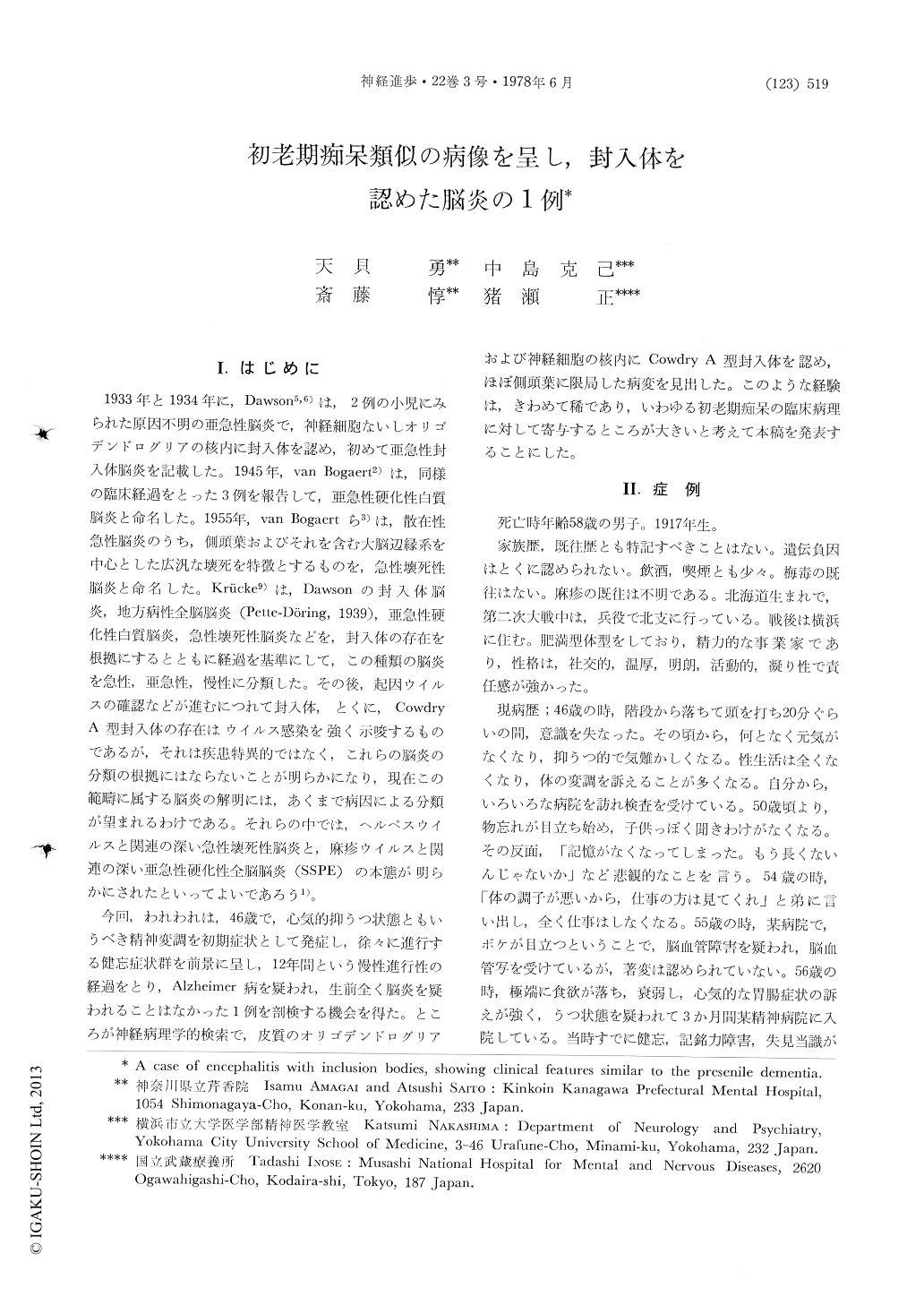Japanese
English
- 有料閲覧
- Abstract 文献概要
- 1ページ目 Look Inside
I.はじめに
1933年と1934年に,Dawson5,6)は,2例の小児にみられた原因不明の亜急性脳炎で,神経細胞ないしオリゴデンドログリアの核内に封入体を認め,初めて亜急性封入体脳炎を記載した。1945年,van Bogaert2)は,同様の臨床経過をとった3例を報告して,亜急性硬化性白質脳炎と命名した。1955年,van Bogaertら3)は,散在性急性脳炎のうち,側頭葉およびそれを含む大脳辺縁系を中心とした広汎な壊死を特徴とするものを,急性壊死性脳炎と命名した。Krücke9)は,Dawsonの封入体脳炎,地方病性全脳脳炎(Pette-Döring,1939),亜急性硬化性白質脳炎,急性壊死性脳炎などを,封入体の存在を根拠にするとともに経過を基準にして,この種類の脳炎を急性,亜急性,慢性に分類した。その後,起因ウイルスの確認などが進むにつれて封入体,とくに,CowdryA型封入体の存在はウイルス感染を強く示唆するものであるが,それは疾患特異的ではなく,これらの脳炎の分類の根拠にはならないことが明らかになり,現在この範疇に属する脳炎の解明には,あくまで病因による分類が望まれるわけである。それらの中では,ヘルペスウイルスと関連の深い急性壊死性脳炎と,麻疹ウイルスと関連の深い亜急性硬化性全脳脳炎(SSPE)の本態が明らかにされたといってよいであろう1)。
The patient was a japanese male who died at the age of 58 years. His past and family histories were non contributory. The onset of the illness was at the age of 46 years, when he gradually became depressive and hypochondriacal. By the age of 50 years and later, his memory had increasingly deteriorated and his family described him as childish and passive. At the age of 56 years, he was admitted to a mental hospital for three months, and diagnosed as suspected Alzheimer's disease. At that time, an EEG revealed moderately diffuse slowing of basic activity.

Copyright © 1978, Igaku-Shoin Ltd. All rights reserved.


